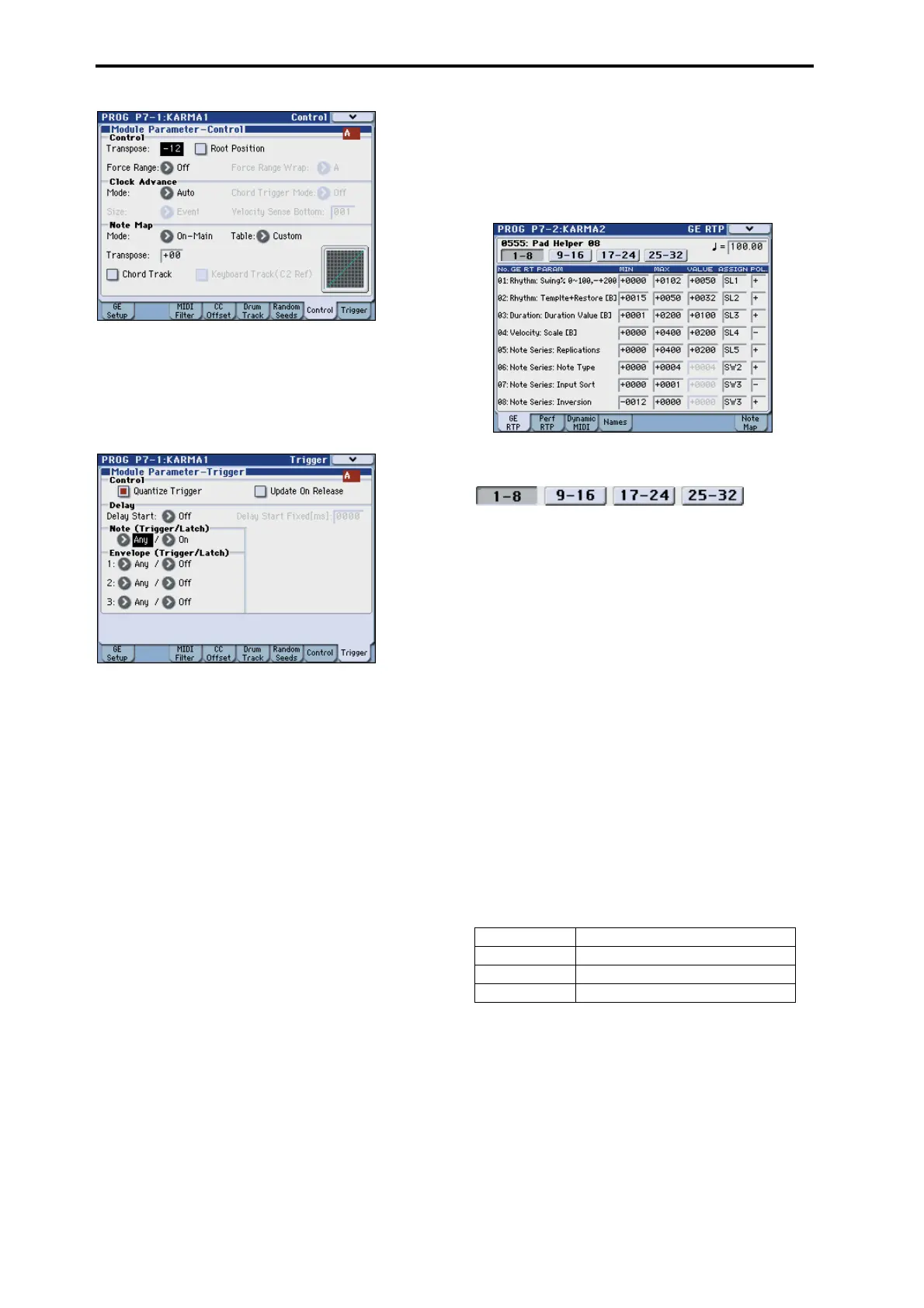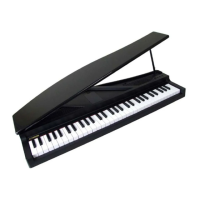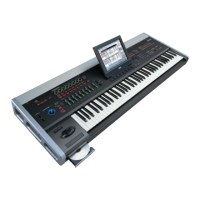Using KARMA
174
Control – Transpose
This lets you transpose the note data being input to the
KARMA module in semitone steps. This will control
the pitch of the phrase or pattern generated by the
KARMA module. For example if you want to lower a
bass phrase by one octave, set this to –12.
Control – Quantize Trigger
This quantizes the timing of the triggering produced
by the note data. (See “Synchronizing the KARMA
function” on page 182)
Off (unchecked): Triggering will occur the moment
you play the key.
On (checked): Trigger timing will be quantized to 16th
note intervals relative to the base tempo.
Note – Trigger
This specifies the triggering conditions for the phrase
or pattern generated by the GE. Try these out and see
how they differ.
Any: Triggering will occur each time you play a key,
and the phrase or pattern will play from the beginning.
AKR: Triggering will occur only the first time you play
a key after having released all notes on the keyboard.
1st: Triggering will occur only at the first note you play
after turning on the KARMA function.
Dyn: Playing the keyboard will not cause triggering.
Triggering will occur when you operate the controller
specified by Dynamic MIDI.
GE Real-Time Parameters
Here you can edit the GE realtime parameters that are
selected by the KARMA module. You can also assign
GE realtime parameters to the KARMA sliders and
KARMA switches so that you can use them to control
the phrase or pattern in realtime while you perform.
Note: If you use the Auto RTC Setup function of “Load
GE Options,” the standard KARMA sliders and
KARMA switches assignments for the RTC Model of
that GE will automatically be made when you select a
GE. (See “Selecting a GE” on page 172)
1. Access the Prog P7–2: KARMA2– GE RTP page.
Use “GE RTC Select” to switch the set of GE realtime
parameters you want to see.
These buttons display GE realtime parameters 1–8, 9–
16, 17–24, or 25–32.
The number and type of GE realtime parameters you
can edit here will differ depending on the selected GE.
(There will be a maximum of 32.) In each GE, the
parameters most useful for controlling the phrase or
pattern are provided as presets.
Note: RTC Model: Every GE contains an internal
setting that indicates its RTC Model. Based on the type
or purpose of the GE, the RTC Model provides a
certain degree of standardization to the over 200
internal parameters of the GE. By default, GEs that
have the same RTC Model will be preset with the same
GE realtime parameters.
2. Use “VALUE,” “MIN,” and “MAX” to specify the
value, minimum value, and maximum value of
each GE realtime parameter.
When you select a GE, the default parameter values
that are preset for that GE will be assigned.
The values you assign here are controlled as follows by
the KARMA CONTROLS you specify in the “ASSIGN”
field.
3. Use “ASSIGN” to assign each GE realtime
parameter to the desired controller.
4. Use “POL. (POLARITY)” to specify the polarity of
control.
+: Control the parameter as shown in the table above.
–: The relationship of MIN and MAX will be inverted.
For example as you move a slider from 000 to 127, the
value will be controlled from the MAX value to the
MIN value.
SL 1–8 000-064-127 =MIN-VALUE-MAX
SLs1 1–8 000-063 = MIN, 064-127 = MAX
SW 1–8 Off = MIN, On = MAX
Dyna 1–8 Depending on Dynamic MIDI setting
